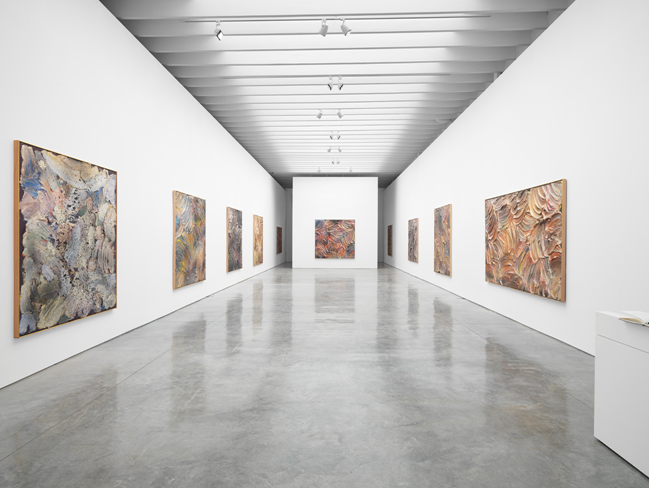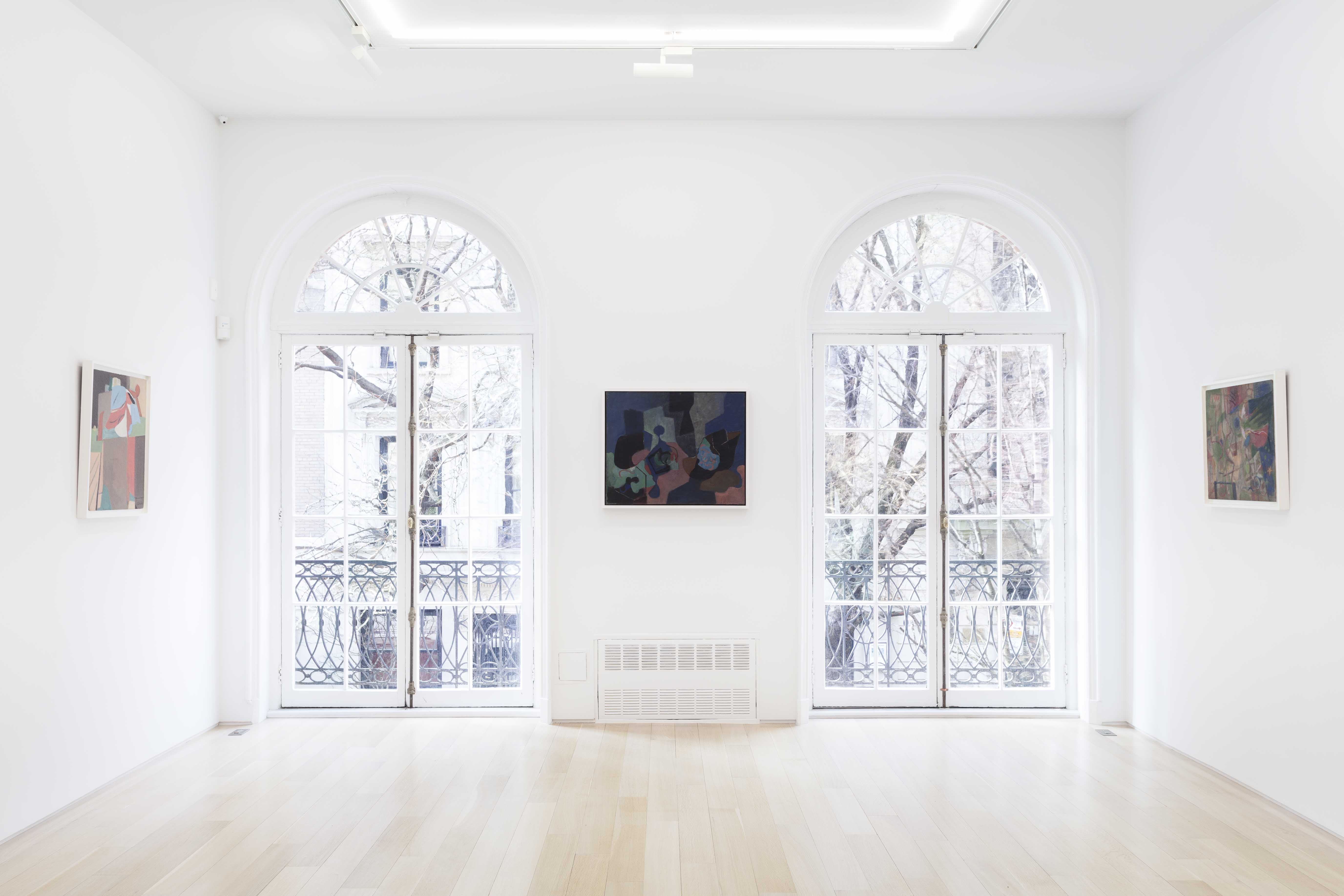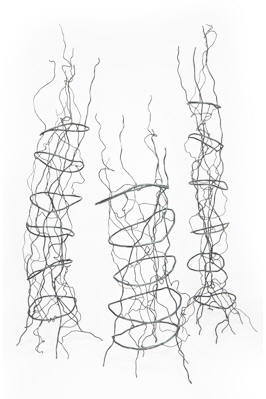Art & Exhibitions
In Praise of Unfashionable Art, Or Let the Artwork Convince You Not the Artist’s Brand
It's time to reconsider once-popular artists like Jules Olitski and James Brooks.

It's time to reconsider once-popular artists like Jules Olitski and James Brooks.

Benjamin Genocchio


Jules Olitski, Eternity Domain (1989).
© Estate of Jules Olitski/Licensed by VAGA, New York NY.
It is one of the more peculiar traits of our age that because so much of the world we inhabit is advertising, we find ourselves in a situation where artists, dealers, and others (including art critics) feel a need to promote themselves as brands.
Being a brand, a package, aids consumption, and the more easily and widely consumed we all are the better—or so the conventional wisdom goes. No wonder so many artists conceive or engineer their artworks to cater to a quick, disposable visual experience. The social media explosion, especially on Instagram, only seems to feed this trend. #MuseumSelfie
As we know, the upshot is a new sort of art world in which the bland uniformity of a Big Mac with fries rules. That’s a judgment call, I know, and it’s for better and worse. I’m not harking back to any kind of good old era and in fact I love the dynamic interaction, transparency, even the social media accountability of the new art world. What I don’t like is the way art is engineered to be fast and expendable—enjoyed for a moment, but ultimately unsatisfying.
I also don’t like being sold, which is how I feel when I encounter art designed to attract the limelight. This is why I can’t abide Jeff Koons. My problem, not his, I know, especially because by and large that is the kind of art that tends to get the most press. We critics are implicated in this, gravitating toward stories we know editors and publishers want to pay for and, in theory, people want to read. We end up writing the same stories about the same people over and over.
It is the same in museums. Right now two Ai Weiwei retrospectives are touring, one in Europe and one here in the United States. Why? You all know the answer. Then there are the galleries, where dealers often have no choice but to chase fashionable, branded artists to secure sales. It just makes everything easier: If art dealers don’t play the game they slowly go out of business. And so it goes, one set of imperatives leading to another, and on and on.
Good news is New York always presents us with options, alternatives, which is why it is wonderfully invigorating to stumble upon so many shows in the city right now of work by artists who are, well, unfashionable, in a word, some of them so out of vogue in terms of style, age, medium or materials that you have to wonder what on earth their dealers are thinking. I mean this as a compliment, to the dealers, and artists, even though it doesn’t sound like it! And to put my money where my mouth is, I’m going to devote a few inches of web space to inviting art-lovers to show a little patience for three of these shows.

James Brooks, installation view of exhibition, at Van Doren Waxter.
Courtesy Van Doren Waxter.
What is curious is that all three artists are working with abstraction, though in different ways, with different materials, and different goals in mind. I have no bias here, just an interest in highlighting good work, some of it once fashionable.
Jules Olitski’s “Mitt Paintings” at Paul Kasmin Gallery on 27th Street are among the most unfashionable artworks in Chelsea if not the United States right now. Based on the artist’s rapid and very public fall from grace as a darling of the post-Abstract Expressionist cabal of the 1960s, dealers and collectors have been reluctant to go near his work, especially the late stuff, which has been virtually unsalable for years. And yet there is—I mean this sincerely—something magical about these mitt paintings from the 80s to the early-90s, with their thick, viscous intersecting swirls of paint.
I know they look a bit like cake icing, that’s fair, but they are gentle and beautiful, and if they were by some flashy Brooklyn kid I bet you they would all be sold. At least that’s my impression. These paintings are lush and oddly endearing in spite of the artist’s name and reputation, and I challenge viewers to say otherwise. I am not saying I love Olitski’s work in general, and I do worry about his overzealous productivity, but you can’t fault the individual pieces in this show as works of art.
The same goes for James Brooks’s paintings and works on paper from the 1940s at Van Doren Waxter on 73rd Street. Does anyone remember him, once a well regarded and revered Abstract Expressionist and member of the Irascibles? (The Flight mural at LaGuardia Airport, finished in 1942 as part of the WPA program, is probably his best-known work.) Postwar American abstract artists aren’t fashionable, far from it, especially those who kept the faith. But lyrical, gestural abstraction seems to be back—see Lauren Silva at ZieherSmith, through March 29—and so there is contemporary context for Brooks’s dynamic, colorful pictures. These works would not look out of place in a funky downtown art fair.

Rebecca Welz, Smoke Trees (2013).
Courtesy June Kelly Gallery.
Rebecca Welz’s welded steel sculptures at June Kelly Gallery on Mercer Street are also somewhat in tune with the look and feel of the contemporary market, even though the material harks back to another era. If you have a country home, you’d be smart to consider one of her pieces in this inviting show, it seems to me, all of which explore form and movement in space: I envisage a group of them happily inhabiting a field somewhere on the South Fork. Don’t be fooled either by their apparent simplicity. It has taken Welz 20 years to get to this point, honing her technique, and it shows. Twisted, bent, and melted into shape, her sculptures are abstract but with organic, dynamic movement. I love the jellyfish-like pieces.
I don’t need to recite the catalog of museum collections to which works by Brooks, Welz, and Olitski belong, or the hundreds (possibly thousands) of articles devoted to their careers—those who are interested can find all this online. But that is not the point. What is important here is to see the work, to test and refine your impressions and prejudices. To be, in a nutshell, convinced or not of the merit of the artwork, not by the artist’s brand.